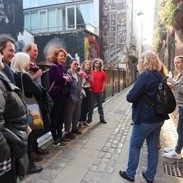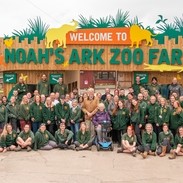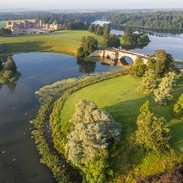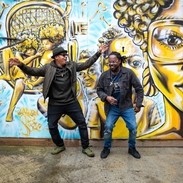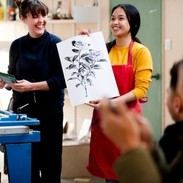Section 8: Continuing your accessibility journey
VisitBritain/Eureka!

Next steps: developing an Access Plan
Thank you for reading this Accessible and Inclusive Tourism Toolkit for Businesses. Wherever you are and however much time, space and resources are available to you, there are many quick wins and longer-term actions you can take to ensure that both your customers and colleagues with accessibility requirements are able to experience inclusive online spaces, built environments and social operations as part of their visit to, or work day at, your business. As a tourism business that wants to welcome everyone and provide equitable experiences, your organisation should implement accessibility considerations and measures into your strategic and regular action plans. So, what can you get started with?
Developing an access plan is a good way of internally sharing with colleagues the actions you aim to take to further your accessibility journey, how you will get there and the positive impact you hope these actions will have. Access plans are a great way to ‘get started’ when it comes to accessibility. Your plan should also note where consultation with those who have lived experience of disability will take place.
Your access plan should establish:
- Your short and longer term aims in terms of accessibility, and how you will prioritise these – both in terms of planning and acting.
- The solutions you propose to any current accessibility barriers faced by customers and/or staff members.
- Ways in which you aim to comply or align with related accessibility standards and guidance.
- Your intended timeframe for getting there, and who will ‘own’ and record the work, ensuring it continues to progress as an important cornerstone of your business.
To maintain accountability and integrity, your access plan should also detail who is going to be responsible for task sign off, and when progress and/or updates are expected.
Case study 1
VisitBritain

The Inn on the Moor Hotel
“Our teams’ mindset has changed completely and we are now more ‘accessibility minded’, constantly reviewing ways in which we can ensure all of our guests and visitors from the local community can have an equal opportunity to relax and enjoy a friendly and comfortable time with us. Don’t be afraid to speak to other businesses and learn what they are doing or have done in the past. Like-minded businesses with a genuine desire to be more accessible won’t mind offering advice and suggestions.”
Using actionable checklists
Further ‘next step’ actions for all tourism businesses to take in terms of accessibility and inclusion can be found in the accompanying actionable checklists. We appreciate that a lot of information is provided in this document, so we have pulled together all the elements that you and your team can start acting on now, and placed them into four checklist documents – dedicated to accommodation, attraction, food and beverage and events businesses. However, mature your business is, and wherever you are on your accessibility journey, we guarantee there will be something for you to identify, prioritise and starting working on within those checklists.
Claiming and maintaining ownership
Accessibility and inclusion is an ongoing journey. It can never really be ‘completed’, so the aim should be to enjoy the process, be as aspirational as possible within your limits, and see where it takes you.
There are, however, certain steps to take that will help you to feel more in control of the inclusion direction of your business, measure your own improvements and successes, and to prioritise what to do next.
To ensure that you continue to own the accessible and inclusive tourism space as one of priority, remember the following:
- Sharing knowledge both internally within your business, and externally with others, is key. Accessibility is not a competition, but something we should all be striving for collectively and supporting each other to achieve.
- Utilise feedback from your customers and colleagues with accessibility requirements as a business improvement tool. Those with lived experience should be respected as the experts they are, and as an asset to your business - both ethically and financially.
- Honesty truly is everything. Even with the very best of intentions, you can have a hugely negative impact as a business if you over-promise and under-deliver. Customers and colleagues will appreciate honesty regarding where you are now, as well as positive aspirations for the future.
- And ultimately, strive for progress, not perfection. ‘Full accessibility’ for everyone is impossible to achieve, but constant improvement (and enjoyment whilst doing it) is not.
Case study 2

GHOSTnortheast
“A lot of changes we made weren’t necessarily challenging, but just required us to think in a different way, and that mindset shift was a representation of success to us. We had a number of potential visitors who wanted to join our events but thought it wasn’t possible. With the involvement of a BSL interpreter and rewriting and rerouting of our ghost walks to exclude steps and unnecessary kerbs, and include spaces to sit, we now welcome visitors who were previously unable to enjoy our events and activities.”
Continual monitoring and evaluation
In order to continually progress on your accessibility journey, continual monitoring of your progress is required. It’s a good idea to ensure that you have the following measures in place:
- The ability to be agile and continuously monitor, revise and update your access plan based on auditing information and feedback from those with lived experience of disability.
- The ability to communicate well with your customers - both online and offline - to manage queries, bookings and complaints.
- The ability to inclusively create and post job adverts, and recruit those with additional requirements (more on this in Inclusive recruitment, employment and staff training).
- A process is which you can ensure your ‘finger is on the pulse’ when it comes to an awareness of new and existing information and data surrounding accessible tourism and the related schemes and awards for businesses. Setting up a LinkedIn profile and following accessibility experts is a great way to engage with updated knowledge, new documentation and free events.
- A network with other businesses, whether local or national, in the same or differing sectors, to call upon for support and advice. If you can be mentored by those who are slightly more mature in their accessibility offering, and provide support to those who are just starting out, even better.
And… always ask!
To ensure your actions align with your intentions, gather the views of customers with accessibility requirements to help you provide inclusive tourism experiences. You could add a question on accessibility to any customer surveys, invite a local access group to visit or for larger attractions set up an Access Panel of people with different accessibility requirements. Importantly, make sure that, wherever possible, you act on the feedback you receive; however small these actions may need to be at first, continuous progression and communication is at the heart of inclusivity as a service.
Case study 3
VisitBritain/Storyman

The Caravan and Motorhome Club
“Our top tip for success in accessibility would be to ask your customers what they want or need; visitors like the ability to make their own decisions.
“Think beyond the physical to include those with non-visible disabilities (installing a ramp does not suddenly make something accessible!) Similarly, think beyond the immediate experience you are offering to provide inclusive information on the end-to-end journey, including arrival, exit and what other activities are available in the area.
“Allow your customer to decide if something will be accessible to them based on good information and imagery. If they have a great time then you have evidence that you can positively shout about! We are currently working with member feedback to help us design more accessible caravan pitches, as well as improving our sites from a number of different angles.”
Thank you
Thank you again for engaging with this toolkit and showing interest in physical, digital and operational improvements in accessible tourism. We wish you the very best of luck with your own inclusivity journey.


